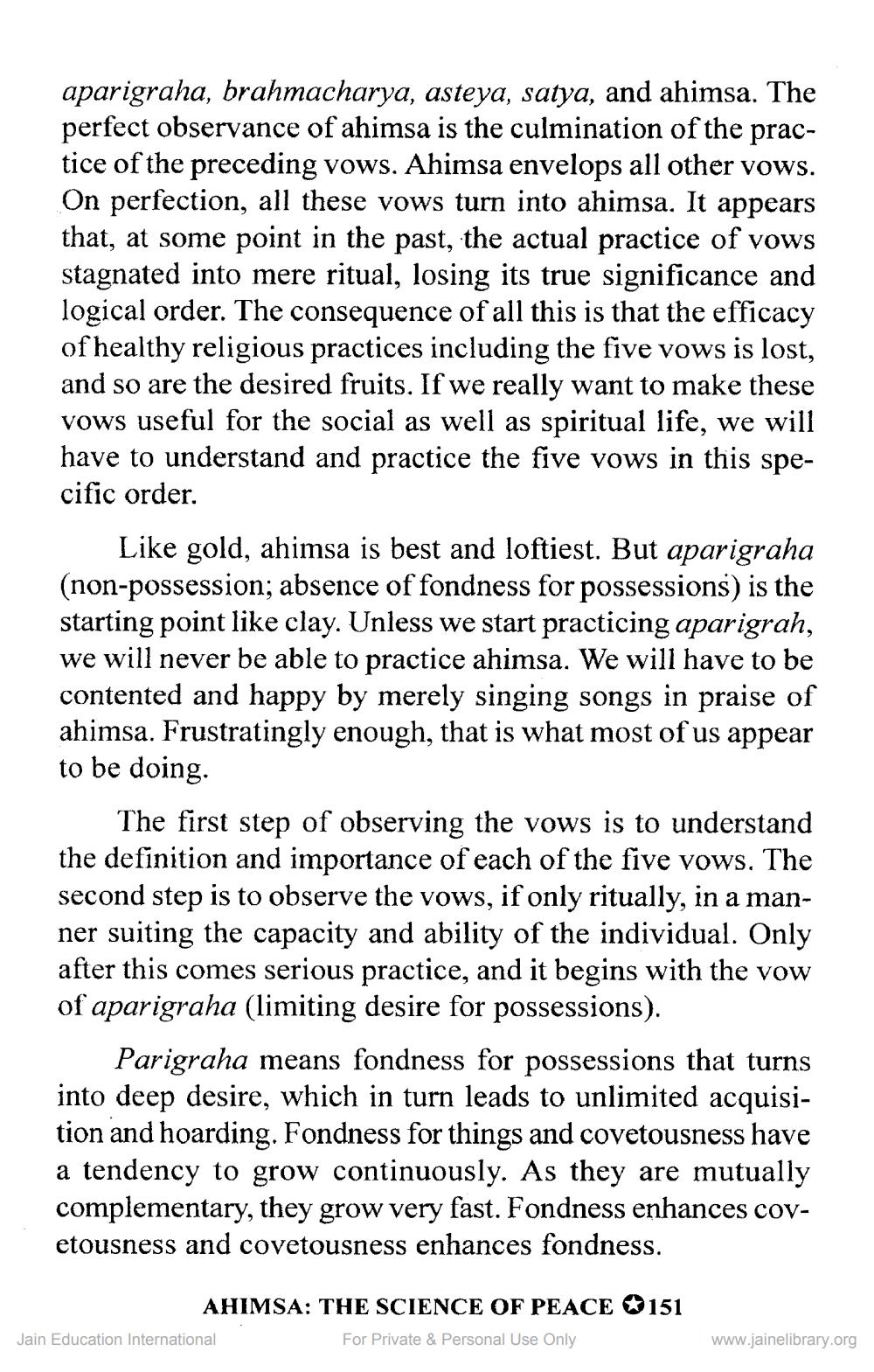________________
aparigraha, brahmacharya, asteya, satya, and ahimsa. The perfect observance of ahimsa is the culmination of the practice of the preceding vows. Ahimsa envelops all other vows. On perfection, all these vows turn into ahimsa. It appears that, at some point in the past, the actual practice of vows stagnated into mere ritual, losing its true significance and logical order. The consequence of all this is that the efficacy of healthy religious practices including the five vows is lost, and so are the desired fruits. If we really want to make these vows useful for the social as well as spiritual life, we will have to understand and practice the five vows in this specific order.
Like gold, ahimsa is best and loftiest. But aparigraha (non-possession; absence of fondness for possessions) is the starting point like clay. Unless we start practicing aparigrah, we will never be able to practice ahimsa. We will have to be contented and happy by merely singing songs in praise of ahimsa. Frustratingly enough, that is what most of us appear to be doing.
The first step of observing the vows is to understand the definition and importance of each of the five vows. The second step is to observe the vows, if only ritually, in a manner suiting the capacity and ability of the individual. Only after this comes serious practice, and it begins with the vow of aparigraha (limiting desire for possessions).
Parigraha means fondness for possessions that turns into deep desire, which in turn leads to unlimited acquisition and hoarding. Fondness for things and covetousness have a tendency to grow continuously. As they are mutually complementary, they grow very fast. Fondness enhances covetousness and covetousness enhances fondness.
AHIMSA: THE SCIENCE OF PEACE 151 For Private & Personal Use Only
Jain Education International
www.jainelibrary.org




